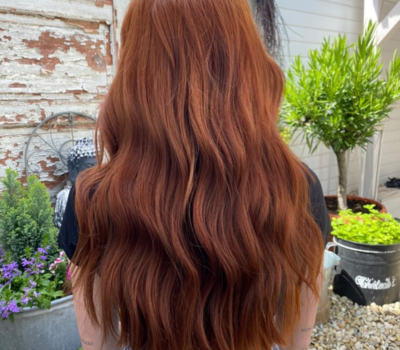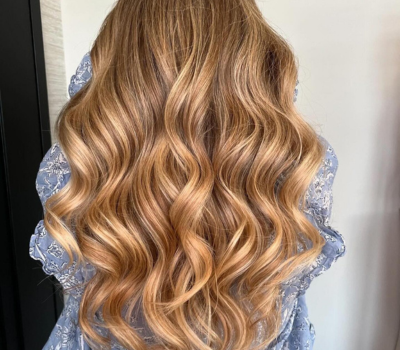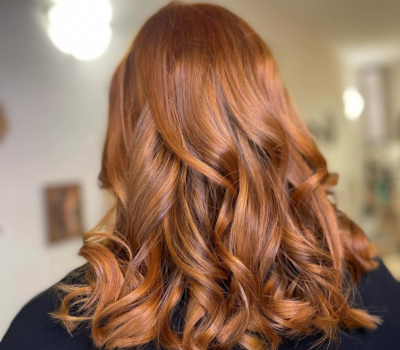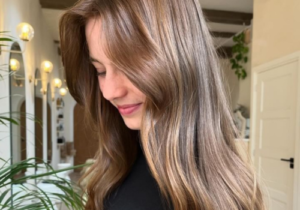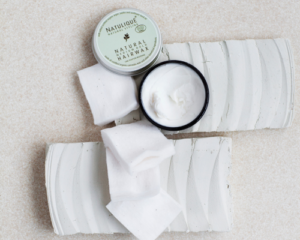Bleaching is a hair technique favored by many to switch to a lighter color, but it can leave hair in a fragile, damaged state. Understanding how to repair hair damaged by bleaching is crucial to maintaining the health and beauty of your hair. In this first section, we'll explore the damage caused by bleaching and how to identify it.
Understanding discoloration damage
What is discoloration?
The fading process
Hair bleaching is a chemical process that removes hair's natural pigments to make it lighter. This is usually done using an oxidizing agent, such as hydrogen peroxide, which penetrates deep into the hair cuticle.
The effects of bleaching on hair
This process can weaken hair structure, leaving hair vulnerable to breakage, dryness and loss of shine. Excessive or poorly executed bleaching can cause irreparable damage.
Identifying signs of fading damage
Different types of damage
- Drought Bleaching removes hair's natural moisture.
- Breaking Hair becomes brittle and can break easily.
- Increased porosity Hair becomes porous, rapidly absorbing and losing moisture.
How to assess the extent of damage
To assess the condition of your hair after bleaching, look for signs such as rough texture, split ends and lack of flexibility. A porosity test can also be performed by placing a strand of hair in a glass of water: if the hair sinks quickly, this indicates high porosity.
Understanding the nature of the damage is the first step towards effective repair. By knowing the impact of discoloration and identifying the symptoms, you'll be better equipped to choose the right treatments and care to restore your hair's health.
Care after discoloration
Recommended hair care products
Special shampoos
After bleaching, it's crucial to use shampoos specially formulated for chemically treated hair. These shampoos are often enriched with nutrients and moisturizing ingredients to help restore moisture and strengthen the hair fiber. Look for sulfate-free shampoos that gently cleanse without stripping hair of its natural oils. Products containing keratin, silk proteins or argan oil can also be beneficial for repairing and nourishing damaged hair.
Conditioners and treatments
Conditioners play an essential role in restoring softness and manageability to bleached hair. Opt for conditioners rich in proteins and nourishing agents such as natural oils and butters. Hair masks and deep treatments are also recommended for intense penetration and repair of the hair's inner layers. Many leave-in treatments offer extra protection against breakage and dryness, forming a barrier around hair strands to seal in moisture.
Hair care routines to follow
Washing frequency
The frequency of washing after bleaching should be reduced to preserve the hair's natural oils. Washing your hair too often can aggravate dryness and brittleness. It's ideal to wash your hair two or three times a week, using dry shampoos between washes to absorb excess oil and refresh the style without using water. This extends the life of hair treatments applicable to colored hair and minimizes future damage.
Drying techniques
Drying hair carefully is essential to minimize damage after bleaching. Avoid using high temperatures to dry your hair so as not to further weaken the hair cuticle. Instead, air-dry if possible, or use a hair dryer with a low to medium heat setting. Using a microfiber towel can also help to gently absorb water without causing excessive friction. What's more, using thermal protectors before heating is crucial to protecting your hair from heat and maintaining its health.
Adopting a rigorous, well-informed hair care routine is essential to restoring the integrity of your hair after bleaching. By choosing the right care products and practices, you can not only mitigate the damage caused by chemical treatment, but also prevent future damage while keeping your hair moisturized and shiny. Consider improving your hair regimen as an investment in the lasting health and beauty of your hair.
See also: How to care for your hair after bleaching?
Professional Treatments For Hair Damaged By Bleaching
The importance of professional treatment
When to consult a professional
When the damage caused by bleaching is severe, it's crucial to consult a hair professional. Professionals have the training and tools needed to thoroughly assess the condition of your hair and propose customized solutions. Consulting an experienced hairdresser is advisable if you notice significant breakage, a very rough texture or if your personal efforts are not producing the desired results. A professional will be able to determine the cause of the damage and propose a treatment plan tailored to your specific needs.
Salon services
Hair salons offer a range of treatments specifically designed to restore damaged hair. Among these services, keratin treatments are popular for their ability to smooth and strengthen the hair fiber. Keratin treatments fill hair cracks and repair split ends, leaving hair smooth and shiny.
Treatments based on ampoules or protein concentrates are also effective in restoring and strengthening damaged hair. These treatments penetrate deep to deliver a concentrated dose of essential nutrients. Finally, professional moisturizing treatments such as special hair masks or steam treatments can bring extremely dry, dehydrated hair back to life. These intensive treatments help retain moisture and improve hair elasticity, making it more resistant to future aggressions.
Expected results of professional treatments
Improved texture and shine
Following professional treatments, hair texture can show noticeable improvement. Damaged hair becomes smoother and more manageable. Targeted treatments help restore the hair cuticle, reducing friction and tangles. What's more, hair's natural shine is often restored, thanks to reduced porosity and rebalanced moisture levels.
Reduces breakage and split ends
A significant beneficial effect of professional treatments is the visible reduction in hair breakage. By strengthening the hair's internal structure, these treatments help prevent future breakage and repair existing damage. Split ends, which result from hair weakened by bleaching, can be effectively treated and sealed, delaying the need for frequent trimming.
Opting for professional treatments is a wise step for anyone looking to reverse the deleterious effects of bleaching. These treatments are an investment in the future health of your hair, offering lasting solutions that go beyond what can be achieved at home. Don't hesitate to turn to a professional for personalized care to restore your hair's original strength and shine.
Natural Alternatives to Repair Damaged Hair
The benefits of natural ingredients
Nourishing Oils
Natural oils, such as coconut oil, argan oil or olive oil, are renowned for their moisturizing and nourishing properties. These oils help to penetrate deep into the hair fiber, providing intense hydration and improving hair flexibility. By applying these oils as a hair mask once a week, you can reduce breakage and restore your hair's natural shine.
Honey and Aloe Vera
The moisturizing and soothing properties of honey and aloe vera make them valuable allies in the care of damaged hair. Honey helps retain moisture in the hair, while aloe vera contains enzymes that repair dead hair cells. Mixing these natural ingredients into homemade masks can nourish and revitalize hair, restoring softness and shine.
Ecological Practices to Prevent Damage
Limiting Heat Use
Reducing the use of heated tools can go a long way towards preventing further damage. Opt for heat-free styling whenever possible, and use thermal protectors whenever you use appliances such as straightening irons or curling irons.
Choosing eco-friendly products
By selecting hair care products that are organic and free from harsh chemicals, you minimize your hair's exposure to potentially damaging substances. Look for certified natural products that contain healthy, environmentally-friendly ingredients to nourish your hair without harmful effects.
FAQ about Repairing Bleached Hair
Q: Is it possible to repair hair damaged by bleaching?
Yes, although it can take some time and requires proper care, it is possible to repair hair damaged by bleaching with the right hair care routine and, if necessary, professional treatments.
Q: Which oils are best for damaged hair?
Coconut oil, argan oil and olive oil are among the best oils for nourishing and restoring damaged hair, thanks to their moisturizing and repairing properties.
Q: How long does it take to see improvements?
Improvements can usually be seen after a few weeks of regular care. However, the time required may vary depending on the severity of the damage and how diligently you follow your treatment routine.
Q: Can fade damage be completely avoided?
Although the effects of discoloration can be minimized, it is difficult to avoid them altogether. Using quality products, following care recommendations, and limiting the frequency of chemical treatments can help reduce damage.
Q: Is it safe to continue bleaching my hair?
If your hair is already damaged, it may be best to give it time to repair itself before considering further chemical treatments. Talk to a professional to assess the health of your hair before proceeding with other treatments.
